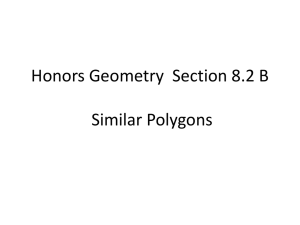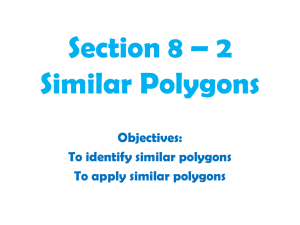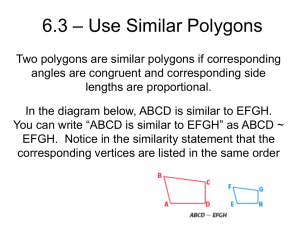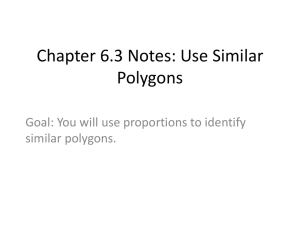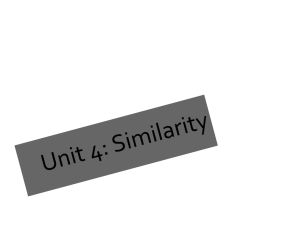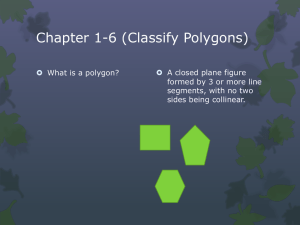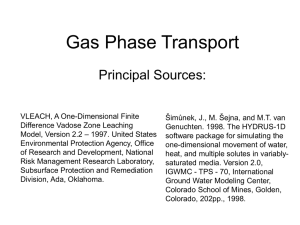Similar Polygons
advertisement
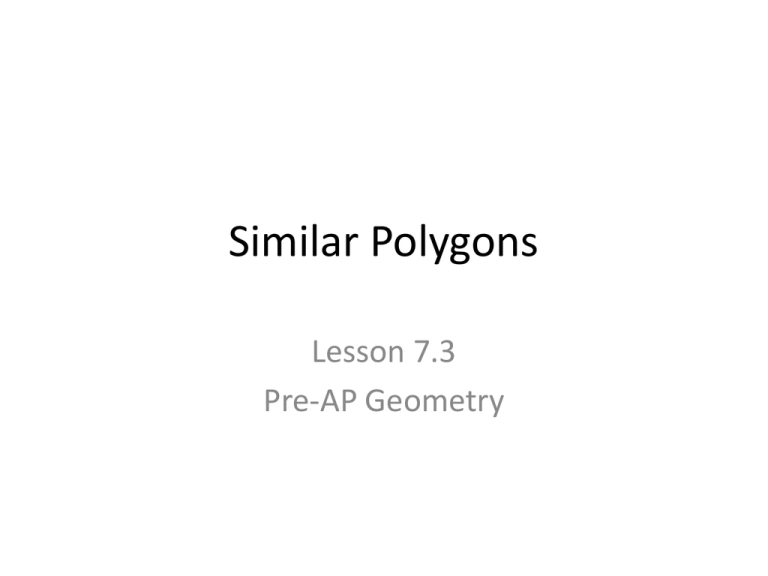
Similar Polygons Lesson 7.3 Pre-AP Geometry Lesson Focus This lesson introduces one of the major topics in geometry, the study of similar figures. Congruent figures have the same size and shape. Similar figures have the same shape. Similar Polygons Two polygons with the same shape are called similar polygons. The symbol for “is similar to” is ∼. (Example: ABC EFG) (Notice that is a portion of the “is congruent to” symbol, ≅.) When two polygons are similar, these two facts both must be true: – Corresponding angles are equal. – The ratios of pairs of corresponding sides must all be equal. Similar Polygons Given: Quadrilateral ABCD ∼ quadrilateral EFGH. 1. Name the pairs of corresponding equal angles. 2. Give the ratios of all corresponding sides. Similar Polygons It is possible for a polygon to have one of the above facts true without having the other fact true. Quadrilateral QRST is not similar to quadrilateral WXYZ. Even though the ratios of corresponding sides are equal, corresponding angles are not equal (90° ≠ 120°, 90° ≠ 60°). Similar Polygons Quadrilateral FGHI is not similar to quadrilateral JKLM. Even though corresponding angles are equal, the ratios of each pair of corresponding sides are not equal (3:3≠5:3). Similar Polygons Quadrilateral ABCD ∼ quadrilateral EFGH. (a) Find m ∠ E. (b) Find x. Similar Polygons It is common to label each corner with letters, and to use a little dash (called a Prime) to mark each corner of the reflected image. A A’ B’ B C Here ABC A'B'C' C’ Scale Factor In similar polygons, the ratio of the lengths of any two corresponding sides is called the scale factor. Scale Factor Video Similar Polygons Problem #1: Quad. ABCD Quad A’B’C’D’ where AB = y, BC = 22, CD = 50, AD = 30, A’B’ = 12, B’C’ = z, C’D’ = 30, A’D’ = x. Find: (a) the scale factor; (b) the values of x, y, and z; (c) the ratio of the perimeters. Similar Polygons Problem #2: Quad. EFGH Quad. E’F’G’H’ where EH = 12, HG = 5, GF = y, EF = 10, E’H’ = x, H’G’ = 2.5, G’F’ = 3, E’F’ = z. Find: (a) the scale factor; (b) the values of x, y, and z; (c) the ratio of the perimeters. Similar Polygons Problem #3: Quad. ABCD Quad. EFGH where AD = 5, DC = 4, mA = 60, mC = 90, EF = 21, FG = 6, HG = 12, mF = 100. Find: (a) mE = ____ (b) mG = ____ (c) mB = ____ (d) If mD = 110, then mH = ____. (e) The scale factor is ____. (f) EH = ____ (g) BC = ____ (h) AB = ____ Written Exercises Problem Set 7.3A, p.250: # 2 - 22 (even) Written Exercises Problem Set 7.3B, Handout 7-3
